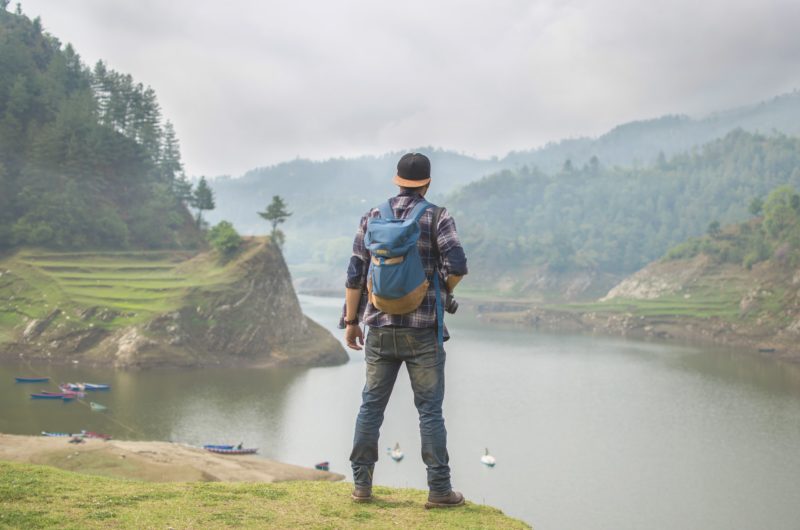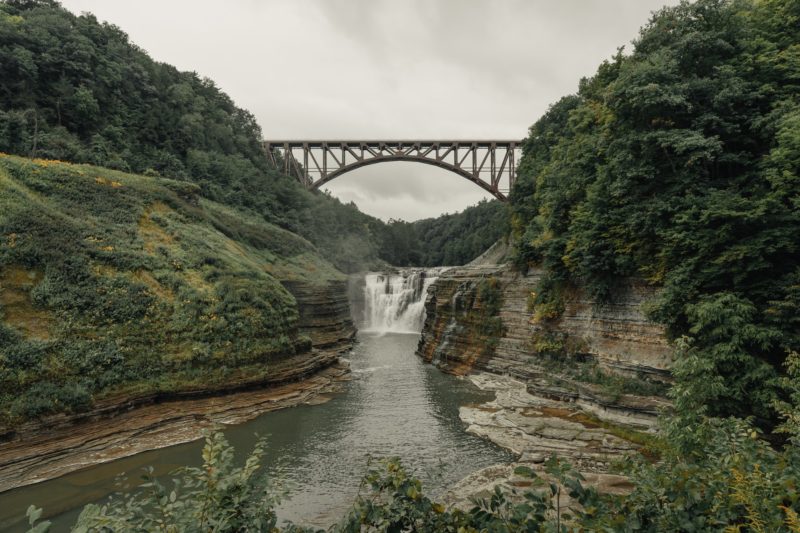In recent years, off the beaten path travel has surged in popularity as more and more travelers seek out authentic, meaningful experiences. Tourists are growing tired of overcrowded, commercialized destinations and are yearning for a deeper connection with the places they visit. Additionally, with the rise of social media and the desire for unique, shareable content, travelers are continually searching for those undiscovered spots that will set them apart from the masses.
So what exactly is off the beaten path travel? Off the beaten path travel refers to exploring lesser-known, unconventional, or remote destinations that aren’t typically frequented by tourists. It’s about venturing beyond the standard tourist hotspots and delving into the hidden gems of a region, where you can experience the authenticity and uniqueness of a place.
Benefits of Off The Beaten Path Travel
Experiencing authentic culture
One of the most significant advantages of off the beaten path travel is the opportunity to immerse yourself in the genuine culture of a destination. Visiting lesser-known locales allows you to interact with locals and witness firsthand the customs, traditions, and way of life that make each place unique. It’s an invaluable opportunity to gain a deeper understanding of the world and the diverse people who inhabit it.
Discovering hidden gems
As you venture off the well-trodden tourist trail, you’ll encounter incredible hidden gems that only a few travelers have had the privilege of experiencing. Whether it’s a secluded beach, an ancient temple, or a charming village, these undiscovered treasures can create some of the most memorable moments of your journey.
Less crowded destinations

Off the beaten path travel often means escaping the hustle and bustle of crowded tourist areas. You’ll have more space to breathe, take in the scenery, and appreciate the sights without feeling overwhelmed by throngs of people. Plus, you’ll likely have better access to local experiences, such as joining a cooking class or attending a cultural event, which can be hard to come by in more popular destinations.
More sustainable travel
By choosing to explore less-visited places, you’re also contributing to more sustainable travel practices. Mass tourism can lead to overdevelopment, environmental degradation, and a loss of cultural identity in popular destinations. By venturing off the beaten path, you can help distribute tourism revenue more evenly, support local communities, and promote responsible travel.
How to Plan an Off The Beaten Path Adventure
Researching lesser-known destinations
To find your perfect off the beaten path destination, start by conducting thorough research. Plenty of online resources, such as travel blogs and forums, are dedicated to showcasing hidden gems and unique locations. Additionally, local travel bloggers often provide insider tips and recommendations to help you uncover the most authentic and unforgettable experiences.
Connecting with locals
Forging connections with locals is one of the most effective ways to discover off the beaten path experiences. Locals can provide invaluable insights into their culture, recommend hidden gems, and even invite you to participate in unique events and activities.
Couchsurfing
Couchsurfing is a platform that connects travelers with locals who are willing to offer free accommodation and share their knowledge of the area. It’s a fantastic way to make new friends, learn about different cultures, and uncover the secrets of your destination.
Language exchange programs
Language exchange programs, such as Tandem or ConversationExchange, can help you connect with locals who are eager to practice their language skills. In exchange for helping them learn your language, you can ask for recommendations on lesser-known sights and experiences in their area.
Social media groups
Join local travel-related social media groups, where you can ask questions, seek advice, and connect with like-minded individuals who are passionate about off the beaten path travel. These groups are often a treasure trove of insider knowledge and can point you in the right direction for your next adventure.
Choosing accommodations
When planning an off the beaten path trip, consider staying at accommodations that are locally owned or have a smaller footprint. This not only supports the local economy but also allows for a more authentic and intimate experience.
Home stays
Home stays involve staying with a local family, providing you with a unique insight into their daily lives and customs. It’s an excellent opportunity to learn about the local culture, try traditional cuisine, and engage in meaningful conversations.
Boutique hotels

Opt for boutique hotels or guesthouses that prioritize personalized service and unique experiences. These accommodations often feature local design elements and support the surrounding community, giving you a more genuine connection to the destination.
Eco-lodges
Eco-lodges are accommodations that focus on sustainability and minimizing their impact on the environment. By choosing to stay at an eco-lodge, you can enjoy a comfortable stay while also contributing to the conservation of the local ecosystem.
Preparing for the Journey
Packing essentials
When embarking on an off the beaten path adventure, pack smart and prioritize versatility. Bring clothing that can be easily layered and adapted to different weather conditions, as well as a basic first aid kit and essential navigational tools, such as a map, compass, or GPS device.
Staying safe
Safety is a crucial consideration when planning an off the beaten path trip. Invest in travel insurance, familiarize yourself with local emergency numbers, and inform friends and family of your itinerary. This way, you can travel with peace of mind and enjoy your adventure to the fullest.
Off The Beaten Path Travel Experiences
Cultural immersion
To truly appreciate the cultural richness of your destination, take part in local festivals and celebrations, try traditional cuisine, and explore the world of art and handicrafts. These experiences provide a window into the soul of a place and its people, leaving you with lasting memories and a deeper appreciation for their customs and traditions.
Local festivals and celebrations
Engaging in local festivals and celebrations is a fantastic way to immerse yourself in the culture of your destination. From religious ceremonies to harvest festivals, these events showcase the unique customs and traditions that define a region.
Traditional cuisine

Food is an essential aspect of any culture, and trying traditional dishes is a must for any off the beaten path traveler. Visit local markets, eat at family-owned restaurants, and even participate in cooking classes to truly savor the flavors of your destination.
Art and handicrafts
Art and handicrafts offer insight into the history, traditions, and beliefs of a community. Take time to explore local galleries, workshops, and artisan markets, where you can not only admire the craftsmanship but also learn about the stories and symbolism behind each piece. You might even pick up a unique souvenir to bring home as a reminder of your off the beaten path adventure.
Outdoor adventures
Off the beaten path travel often goes hand-in-hand with outdoor adventures. Whether it’s hiking along lesser-known trails, encountering wildlife in their natural habitat, or embarking on scenic drives, these experiences allow you to connect with nature and appreciate the beauty of your surroundings.
Hiking trails
Venture off the main tourist routes and explore lesser-known hiking trails that lead to stunning vistas, secluded waterfalls, or ancient ruins. These hidden gems often provide a more peaceful and rewarding experience than their popular counterparts.
Wildlife encounters
One of the joys of off the beaten path travel is the chance to observe wildlife in their natural environment. Seek out destinations that offer responsible and sustainable wildlife experiences, such as visiting national parks or joining ethical wildlife tours with knowledgeable local guides.
Scenic drives and train rides
Embark on a scenic drive or train ride through remote landscapes, where you can discover breathtaking vistas, charming villages, and unexpected points of interest. These journeys often provide a more intimate and leisurely way to explore a destination, allowing you to appreciate the scenery at your own pace.
Historical sites
Off the beaten path travel can lead you to lesser-known historical sites that reveal fascinating stories and unique perspectives on the past. From ancient ruins to obscure monuments and small museums, these sites can offer a more immersive and personal experience than their more famous counterparts.
Ancient ruins
Unearth the mysteries of the past by visiting lesser-known ancient ruins. These sites, often overlooked by the typical tourist, can provide a deeper understanding of a region’s history and offer a more tranquil and contemplative atmosphere.
Lesser-known monuments
Seek out monuments that may not be as famous but are equally significant in terms of their historical and cultural value. These hidden gems often have compelling stories to tell and provide a unique perspective on the region’s heritage.
Small museums
Small, local museums often showcase a wealth of historical and cultural artifacts that provide a glimpse into the lives and traditions of the people who once inhabited the area. Take time to explore these intimate spaces and gain a deeper appreciation for the region’s history.
Tips for Responsible Off The Beaten Path Travel
Supporting local economies
When traveling off the beaten path, make an effort to support local economies by shopping at local markets, dining at family-owned restaurants, and booking locally-owned accommodations. This not only enhances your travel experience but also helps to distribute tourism revenue more evenly and fosters sustainable development in the area.
Respecting cultural norms
As you venture into lesser-known destinations, be mindful of local customs and etiquette. Dress modestly when visiting religious sites, adhere to local dining etiquette, and be respectful of the people and their traditions. This shows your appreciation for their culture and helps to foster positive relationships between locals and travelers.
Environmental stewardship
Off the beaten path travel often involves visiting pristine, untouched environments. To ensure these places remain unspoiled, follow leave no trace principles and choose eco-friendly transportation options whenever possible. By doing so, you’re contributing to the preservation of these natural wonders for future generations to enjoy.
Off the beaten path travel is a rewarding and enriching experience that allows you to explore the world’s hidden gems, immerse yourself in authentic cultures, and contribute to more sustainable tourism practices. By planning carefully, connecting with locals, and being a responsible traveler, you can embark on unforgettable adventures that leave a lasting impact on both you and the destinations you visit. So, pack your bags, embrace the unknown, and let the world’s lesser-known wonders inspire and amaze you.
Frequently Asked Questions (FAQs)
What are some examples of off the beaten path destinations?
Off the beaten path destinations can be found all over the world, from remote villages in the mountains of Nepal to hidden beaches in the Philippines. Some examples include:
- The Faroe Islands, an archipelago in the North Atlantic
- The Danakil Depression in Ethiopia
- Kotor, Montenegro
- Puebla, Mexico
- Kampot, Cambodia
How can I find off the beaten path activities in popular tourist destinations?
To find off the beaten path activities in popular tourist destinations, consider connecting with locals, using social media platforms to search for hashtags or location tags, or visiting local tourism offices for insider tips and recommendations.
Is off the beaten path travel safe for solo travelers?
Off the beaten path travel can be safe for solo travelers, provided you take necessary precautions, such as researching your destination thoroughly, informing friends or family of your itinerary, and staying aware of your surroundings. It’s also essential to choose accommodations and activities that prioritize safety and have a good reputation among other travelers.
What are the challenges of off the beaten path travel?
Some challenges of off the beaten path travel may include language barriers, limited infrastructure, and a lack of tourist amenities. However, these challenges can also be part of the adventure and help make your trip more memorable and authentic. To overcome these obstacles, be prepared, flexible, and open to learning from your experiences.
How can I make my off the beaten path trip more affordable?
To make your off the beaten path trip more affordable, consider staying at budget accommodations, such as home stays or hostels, eating at local markets or street food stalls, and using public transportation. Additionally, traveling during the off-peak season can help you find lower prices on flights and accommodations.








































